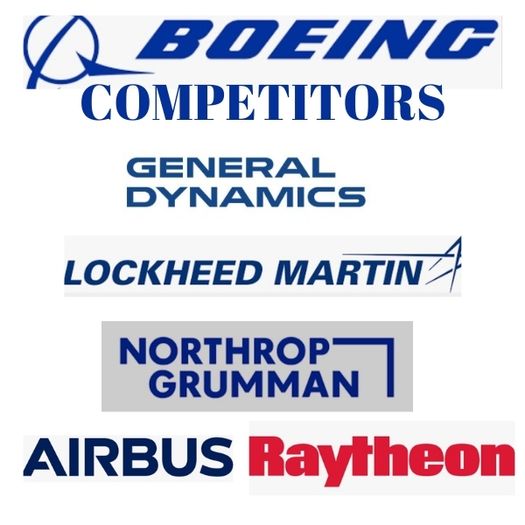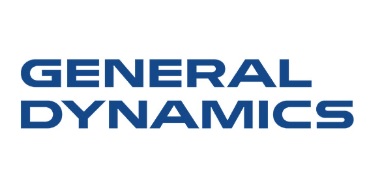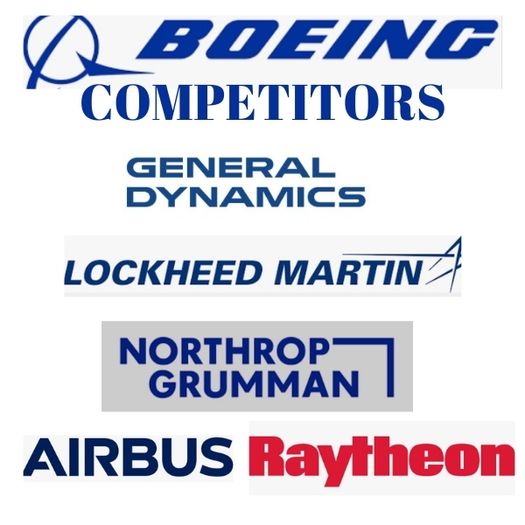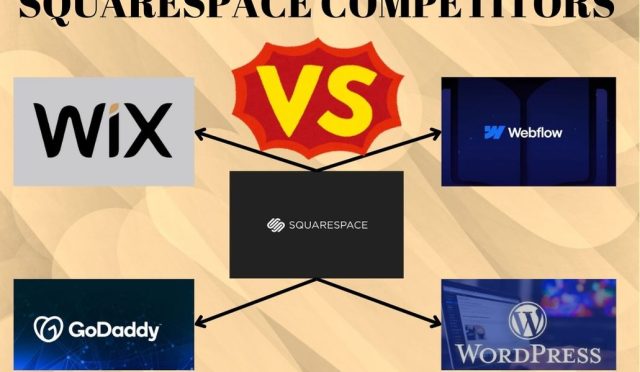Introduction
In the fast-evolving world of aerospace and defense, Boeing competitors represent formidable forces in shaping the future of aviation, defense, and space exploration. As one of the biggest aerospace giants, Boeing has long stood at the forefront of innovation in the industry. However, it faces stiff competition from several well-established and emerging companies. From Airbus in commercial aviation to Lockheed Martin in defense, the landscape is highly dynamic. This analysis delves deep into the key Boeing competitors, examining their strengths, weaknesses, and future plans, and how these rival companies are vying for dominance in this competitive arena.
Boein Competitors: The Aerospace & Defense Arena
Boeing, founded in 1916, is a cornerstone in the aerospace industry. The company is known for designing, manufacturing, and selling commercial airplanes, defense products, and space systems. Its strong presence in both commercial aviation and military defense has made it a leader for over a century. However, the aerospace and defense market is undergoing rapid transformation, fueled by new technologies, geopolitical tensions, and a heightened focus on sustainability. The presence of various Boeing competitors, including aerospace giants like Airbus, Lockheed Martin, and specialized defense firms like Northrop Grumman, adds significant complexity to this ever-evolving marketplace.
Key Boeing Competitors
This analysis will delve deeper into some of the most prominent Boeing competitors, categorized by their primary areas of focus:
Company Overview of the Key Boeing Competitors
| Feature | Boeing | Airbus | Lockheed Martin | Northrop Grumman | General Dynamics | Raytheon Technologies |
| Founded | 1916 | 1970 | 1912 | 1939 | 1899 | 1922 |
| Founder(s) | William Boeing | (Consortium of European companies) | Allan Lockheed & Malcolm Loughead | John K. Northrop & LaMotte T. Cohu | (various mergers) | Laurence K. Marshall, Vannevar Bush, Charles G. Smith |
| CEO | David Calhoun | Guillaume Faury | James Taiclet | Kathy Warden | Phebe Novakovic | Gregory J. Hayes |
| Mission | To connect, protect, explore and inspire the world through aerospace innovation | To pioneer sustainable aerospace for a safe and united world | To provide national security solutions and advance scientific discovery | To define possible within the domain of technology and human potential | To be the most trusted provider of advanced technology solutions | To define the future of aerospace and defense |
| Employees | ~156,000 | ~130,000 | ~116,000 | ~95,000 | ~102,000 | ~180,000 |
| Headquarters | Arlington, Virginia, USA | Toulouse, France | Bethesda, Maryland, USA | Falls Church, Virginia, USA | Reston, Virginia, USA | Waltham, Massachusetts, USA |
| Market Cap ($B) | 114.37 | 103.10 | 107.73 | 70.43 | 70.70 | 152.97 |
| Profit Margin (%) | -17.8 | 6.5 | 9.8 | 8.1 | 8.2 | 8.9 |
| R&D Spending ($B) | $3.3 | $3.0 | $1.5 | $1.4 | $1.2 | $4.5 |
| Key Markets | US, Europe, Asia | Europe, Asia, Middle East | US, Europe, Middle East | US, Europe, Middle East | US, Europe, Middle East | US, Europe, Middle East |
| Specialization | Commercial airplanes, defense aircraft, space systems | Commercial airplanes, helicopters, defense aircraft, space systems | Fighter jets, military transport aircraft, missiles, space systems | Stealth technology, autonomous systems, cybersecurity, space systems | Submarines, armored vehicles, business jets, IT services | Missiles, radar systems, electronic warfare, aircraft engines |
| Key Products | 737, 787, 777X, F/A-18, KC-46, P-8 | A320 family, A350, A380, H125, H145, A400M | F-35, F-22, C-130, Javelin, PAC-3, Orion | B-2 bomber, Global Hawk, E-2 Hawkeye, missile defense systems | Submarines, Abrams tank, Stryker, Gulfstream jets | Patriot, Tomahawk, radar systems, Pratt & Whitney engines |
| Gov’t Relations | US Department of Defense, NASA, international governments | European Union, European Space Agency, international governments | US Department of Defense, NASA, international governments | US Department of Defense, intelligence agencies | US Department of Defense, international governments | US Department of Defense, international governments |
| Sustainability Initiatives | Sustainable aviation fuels, ecoDemonstrator program, reducing emissions | ZEROe (zero-emission aircraft), sustainable aviation fuels | Renewable energy, supply chain sustainability, employee development | Environmental stewardship, social responsibility, ethical governance | Energy efficiency, reducing environmental impact | Sustainable aviation technologies, reducing emissions, community engagement |
| Recent Developments | 737 MAX return to service, Starliner development | A321XLR launch, new helicopter programs | Hypersonic weapons development, space exploration partnerships | Acquisition of Orbital ATK, development of new defense systems | Acquisition of Raytheon Company, focus on integrated defense solutions | Acquisition of Collins Aerospace, development of autonomous systems |

Airbus: The Biggest Boeing Competitors in Commercial Aviation

Airbus is one of Boeing’s fiercest competitors in the commercial aircraft market. As of 2025, Airbus holds about 60% of the market share in commercial aviation, primarily due to its strong offerings like the A320 family, A350, and A380. These aircraft compete head-to-head with Boeing’s 737 and 787 families. Airbus is also a formidable player in defense and space systems, creating direct competition for Boeing in these sectors.
Lockheed Martin: Dominating the Defense Sector

In the defense sector, Lockheed Martin stands as one of the strongest Boeing competitors, specializing in fighter jets, missiles, and space systems. Known for its advanced F-35 Lightning II and F-22 Raptor fighter jets, Lockheed Martin holds a dominant position in the defense aerospace market. Boeing competes with Lockheed in this space with its F/A-18 Hornet and KC-46 tanker aircraft, but Lockheed’s close ties with the U.S. Department of Defense and extensive defense contracts give it a competitive edge.
Northrop Grumman: Innovation in Stealth and Cybersecurity

Northrop Grumman has built its reputation by specializing in stealth technology, cybersecurity, and autonomous systems. Its key products, like the B-2 Spirit bomber and Global Hawk drones, position it as a major Boeing competitor in the defense and aerospace sectors. While Boeing is known for its large-scale defense aircraft, Northrop Grumman excels in highly specialized, advanced technologies that cater to modern military and space applications.
General Dynamics: A Diverse Aerospace and Defense Portfolio

General Dynamics offers a unique competitive challenge to Boeing by providing submarines, armored vehicles, business jets, and IT services. While Boeing’s primary focus is on aircraft, General Dynamics covers a broader range of defense sectors, including submarine technologies and cybersecurity. This diversified portfolio allows General Dynamics to tap into various areas where Boeing has less penetration.
Raytheon Technologies: A Key Player in Missile Defense and Aerospace

Raytheon Technologies is a critical player in missile defense, radar systems, and electronic warfare technologies. Raytheon competes with Boeing in the aerospace sector, especially with their Pratt & Whitney aircraft engines and missile systems. As Boeing continues to enhance its defense systems, Raytheon’s innovation in advanced missile defense and radar technologies creates an intense competition.
Market Share (Approximate) of the Boeing Competitors
It’s difficult to provide precise market share figures due to the complex nature of the aerospace and defense industry and the varying classifications of products and services. However, here’s an estimated breakdown based on revenue and major contracts:
Commercial Aircraft Market:
- Boeing: ~40% (competes directly with Airbus in the global commercial aircraft market)
- Airbus: ~60% (dominates the commercial aircraft market, particularly in Europe)
Defense Aircraft Market:
- Lockheed Martin: ~30% (leading in fighter jets like the F-35)
- Boeing: ~25% (offers military aircraft such as the F/A-18 Super Hornet and P-8 Poseidon)
- Northrop Grumman: ~15% (focuses on specialized defense technology)
Space Systems:
- SpaceX: ~40% (gaining market share rapidly in space systems and satellite technology)
- Boeing: ~20% (competes in space exploration with products like the Starliner spacecraft)
- Lockheed Martin: ~15% (focused on military and commercial satellite systems)
Strengths and Weaknesses of the Boeing Competitors
Boeing:
- Strengths: Strong brand recognition, diverse product portfolio in both commercial aviation and defense, and a large global footprint.
- Weaknesses: Recent challenges with the 737 MAX program, competition from Airbus in commercial aviation, and heavy reliance on government defense contracts.
Airbus:
- Strengths: Strong presence in commercial aviation, diverse product line, and a growing role in defense and space sectors.
- Weaknesses: Over-reliance on the European market and struggles to compete with Boeing’s dominance in U.S. defense contracts.
Lockheed Martin:
- Strengths: Technological leadership in defense, robust relationships with the U.S. government, and a large defense order backlog.
- Weaknesses: Heavy dependence on U.S. defense budgets and potential cost overruns on major projects.
Northrop Grumman:
- Strengths: Expertise in cutting-edge stealth technology, cybersecurity, and autonomous systems.
- Weaknesses: Less diversified compared to Boeing and Lockheed Martin in the broader aerospace sector.
General Dynamics:
- Strengths: Diversified portfolio across aerospace, cybersecurity, and military systems.
- Weaknesses: Exposure to cyclical industries like shipbuilding, and limited focus on commercial aviation compared to Boeing and Airbus.
Raytheon Technologies:
- Strengths: Leadership in missile defense and aerospace technologies with strong connections to the U.S. military.
- Weaknesses: Reliance on U.S. defense contracts and challenges in adapting to rapidly changing aerospace technologies.
Product Range of the Boeing Competitors
Boeing:
Commercial airplanes (e.g., 737, 787, 777X), defense aircraft (e.g., F/A-18 Super Hornet, KC-46 tanker, P-8 Poseidon), missiles (e.g., Harpoon, JDAM), space systems (e.g., Starliner spacecraft, satellites).
Airbus:
Commercial airplanes (e.g., A320 family, A350, A380), helicopters (e.g., H125, H145), defense aircraft (e.g., A400M, Eurofighter Typhoon), space systems (e.g., Ariane rockets, satellites).
Lockheed Martin:
F-35 fighter jet, F-22 Raptor, C-130 Hercules, missiles (e.g., Javelin, PAC-3), space systems (e.g., satellites, Orion spacecraft).
Northrop Grumman:
B-2 Spirit bomber, Global Hawk drone, E-2 Hawkeye, missile defense systems (e.g., Ground-based Midcourse Defense), cybersecurity solutions.
General Dynamics:
Submarines (e.g., Virginia-class), armored vehicles (e.g., Abrams tank, Stryker), Gulfstream business jets, IT services.
Raytheon Technologies:
Missiles (e.g., Patriot, Tomahawk), radar systems, electronic warfare systems, Pratt & Whitney aircraft engines.
Future Strategies of Boeing Competitors
- Boeing: Focuses on restoring its brand image after the 737 MAX crisis and continues to innovate in autonomous aircraft and sustainable aviation technologies.
- Airbus: Invests heavily in new aircraft designs, sustainability initiatives, and expanding defense and space operations.
- Lockheed Martin: Driving growth in hypersonic weapons, space technologies, and artificial intelligence.
- Raytheon Technologies: Focuses on missile defense advancements, directed energy weapons, and next-gen radar technologies.
Boeing vs Airbus: The Ultimate Commercial Competiton
One of the most frequently asked questions is who is the main competitor of boeing? The Boeing vs Airbus rivalry is the most high-profile in the aerospace industry. These two giants compete fiercely for market share in commercial aviation, with Boeing’s 737 and 787 models competing directly against Airbus’s A320 and A350 families. Each company’s offering caters to different market segments, and airlines often evaluate factors like fuel efficiency, comfort, and range when selecting aircraft.
Consumer Experiences and Preferences of the Boeing Competitors (Airlines and Passengers)
- Commercial Aircraft: Airlines and passengers often consider factors like fuel efficiency, passenger comfort, range, and reliability when choosing between Boeing and Airbus aircraft.
- Defense Aircraft: Military customers prioritize factors like performance, capabilities, and cost when selecting defense aircraft from Boeing and its competitors.
Customer Satisfaction of the Boeing Competitors
- Boeing: Customer satisfaction can vary depending on the specific product and service, but Boeing has faced challenges in recent years due to the 737 MAX crisis.
- Airbus: Generally receives positive feedback for its aircraft, but satisfaction can vary depending on the specific model and customer.
Conclusion
The competitive dynamics surrounding Boeing competitors continue to evolve as both traditional aerospace giants and emerging players like SpaceX disrupt the space and defense sectors. For Boeing, maintaining its market position will require navigating technological innovations, sustainability initiatives, and defense contracts effectively. Understanding the strengths, weaknesses, and future strategies of Boeing competitors provides valuable insight into the ongoing evolution of the aerospace and defense industry. With increasing competition, the future of Boeing and its rivals remains a fascinating space to watch. If you liked this review, you can also review our article about other Technology services posts here.


